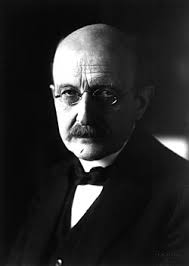A Theory of a man who won the Nobel Prize for Physics 100 years ago
“Light bulbs can be very, very complicated” – Jerry Fodor
Science can be a very bizarre subject. What could be the complexity in a light bulb? It has electricity passing through a tungsten filament, which heats up inside a sealed glass compartment and emits light. Surely there is nothing to complicate that regular household item. Right? That’s wrong.
Let’s consider what light is. It can be considered as an electro-magnetic radiation. The color of light can vary depending on the wavelength of the emitted radiation. Theoretically, this should mean that all the colors of the spectrum could be observed by altering the wavelength (or frequency) of the light. However, this is impossible practically. Scientists in the late 19th century who observed black-body radiation found out that all radiations have only certain permissible energy levels and hence, only certain possible wavelengths. This situation continued to baffle scientists as no theoretical explanation was available at that time for this phenomenon.
The answer to the problem came out of nowhere. In the year 1900, a 42-year-old professor at the University of Berlin, Max Planck decided purely based on guesswork that instead of emerging continuously, the radiant energy was emitted in small, discrete bundles. This became known as the quantization of energy. Planck postulated that the energy of each bundle would be proportional to the frequency of its radiation. The letter “h” was his choice for the proportionality factor. This was the creation of a very famous equation in physics,
E = hυ
The above theory can be illustrated by a simple example. Let us consider the Sri Lankan currency system. The minimum amount of money a person can give is LKR 0.01, as there is no way to give a fraction of one cent (My late grandmother would have commented that there used to be a half cent coin back in her day). Therefore, all monetary transactions in Sri Lanka can be expressed in the form of n(LKR 0.01), where “n” is an integer
The scientific world did not immediately grasp the theory. Even Planck himself doubted his work. But then, famous scientists like Albert Einstein and Neils Bohr successfully applied Planck’s theory in their work, proving that this theory was applicable both theoretically as well as practically. 18 years after his great discovery, in 1918, 60-year-old Max Planck was awarded the Nobel Prize for Physics for his contribution to the quantum theory.
References:-
- Halliday, Resnick, & Walker, J. (2008). Fundamentals of Physics. New Delhi: Wiley India.
- Hooper, H. O., & Gwynne, P. (1977). Physics and the Physical Perspective. New York: Harper & Row, Publishers, Inc.
Image credits:-
https://www.pexels.com/photo/bright-bulb-close-up-dark-459718
https://commons.wikimedia.org/wiki/File:Max_Planck_(1858-1947).jpg


